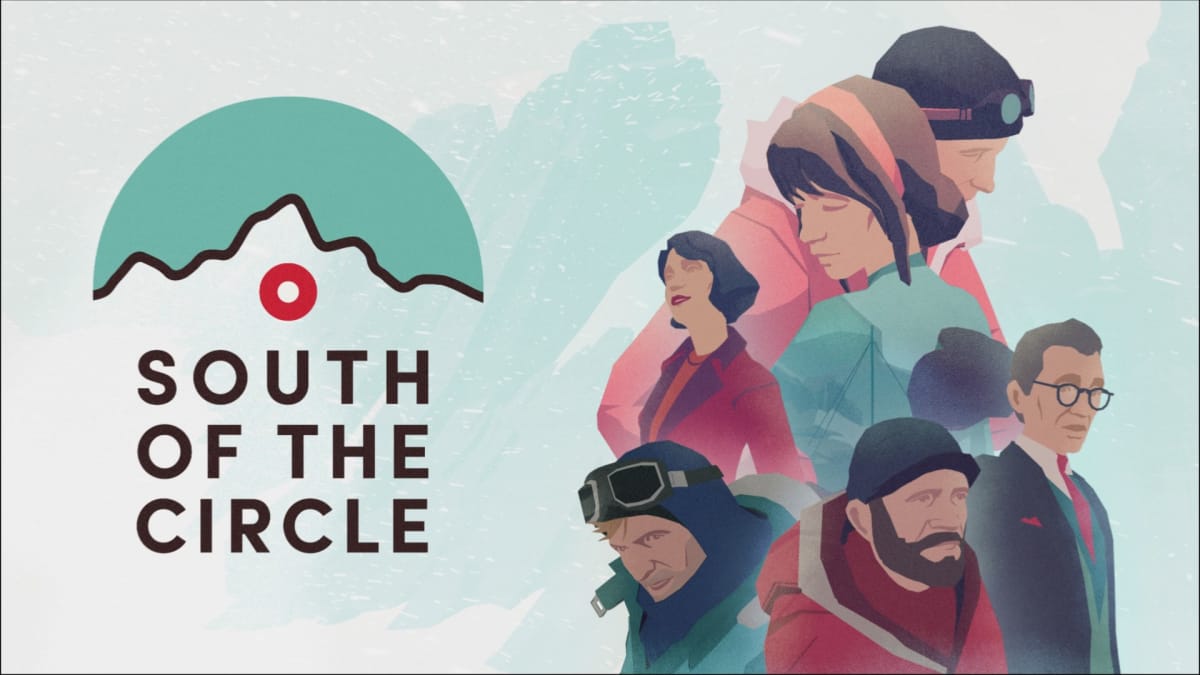South of the Circle is an experience clearly designed with a specific platform in mind. It was released on Apple Arcade in 2020 and a lot of its design decisions, from control scheme to UX to UI, can be traced back to a touch-screen interface. In some ways, these design concessions are a benefit to the game's console and PC release. On the one hand, it helps elevate and highlight the game's various narrative elements, but it also brings some of the clunkier technical aspects into greater focus.

In South of the Circle, you play as Peter Hamilton, a professor from Cambridge University that has been thrown into a terrible predicament. His plane has crashed somewhere in the middle of the Antarctic Circle and no aid is coming. Making matters worse, he appears the place where he crashed is a hotbed between the UK and the Soviets. Desperate to find rescue, Peter braves the snow, traveling from points of interest such as research outposts and oil tanker ships, looking for help of any kind. As Peter travels, his mind wanders; flashing back to earlier points of his life leading up to the fateful plane crash. As things become increasingly dire, Peter's exhaustion and lingering regret for parts of his life mix and overlap, leading to surreal imagery and increasingly unreliable recollections of events.
In other words, South of the Circle is a walking simulator. There is very little dynamic gameplay, no puzzles or challenges, and the entire experience hinges on character performances and atmosphere. To that end, Peter's journey and recollections do carry a fair amount of emotional weight. In addition to the dire circumstance he's in, he is plagued by regret and remorse for various points in his life, and as these events resurface as he travels, there are moments where he can be unreliable. A lot of this ambiguity is further punctuated by different narrative layers that creep in the more you learn about Peter. The claustrophobic Cold War paranoia of the 1960s. The rise of various feminist civil rights movements leading to perceived instability in the various institutions Peter is beholden to. Even intimate and estranged relationships with family and loved ones have a natural push and pull as these historic events test his personal bonds.
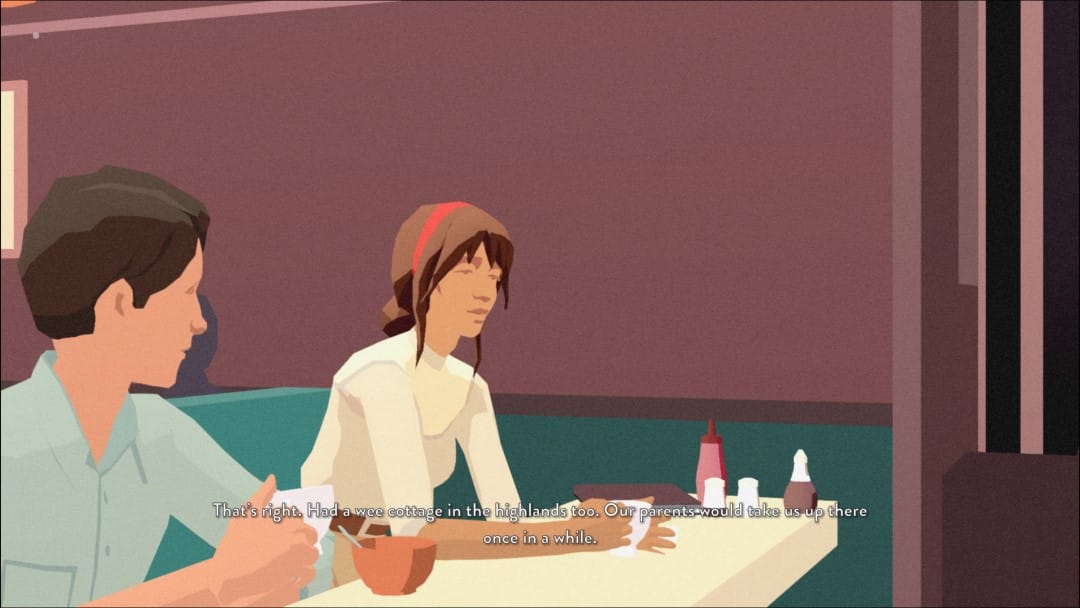
This does lead to some mild frustrations as you experience South of the Circle. As the scenes progress, you do get dialogue options, represented by abstract shapes on the screen. These include concern, panic, shyness, assertiveness, or earnestness. But, there is no “silence” option popularized by Telltale Games' work. If there is one response, Peter will default to it after a certain amount of time has passed. In addition, there are moments where this illusion of choice breaks down. Peter's responses will lean more on him being a polite but otherwise soft-spoken individual. It's part of a familiar criticism of story-driven experiences making the player feel more like a passive observer than a guiding influence.
South of the Circle has been compared to another walking simulator, 2016's Firewatch, and they do have some parallels. Both are about individuals that have undergone hardship in their lives and are trying to move forward. Both are deeply personal experiences that deal with different forms of loss and regret. The difference being that the main character of Firewatch has a defined history with the player's inputs being different natural reactions to those events, leading to a more personal interpretation. As for South of the Circle, there's a persistent sense of ambiguity when it comes to the events unfolding, which can undermine any input by the player. This results in unfulfilled arcs, denial of closure, or even straight answers by the time the credits roll.
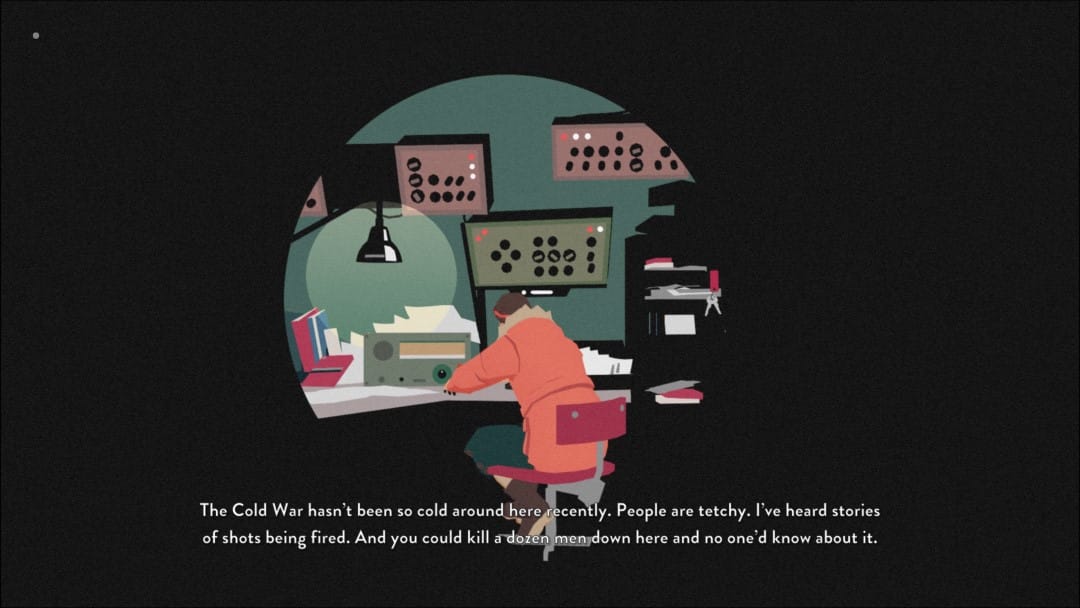
As for my experience with South of the Circle, there were times when this surreal narrative structure and dialogue system worked against my enjoyment. There were a few stretches where Peter only had one dialogue option and, since he would respond anyway, I would check out and just listen to the dialogue, treating it more like an arthouse indie film than a videogame.
This led to an ironic revelation. The game has some great visual presentation with locations blending and transitioning seamlessly from barren tundra to the British suburbs, perfectly cinematic match cuts between offices and abandoned stations. The story is peppered with social commentary about everything from systemic oppression, gender roles, and the dangers of geopolitical instability. All of this is in service of a narrative about choice and regret...that I barely had a say in its proceedings.
This doesn't mean South of the Circle's story is poorly presented. There are some great voice-actors attached to this project, including Gwilym Lee (Bohemian Rhapsody) as Peter, Olivia Vinall (The Woman In White) as his partner Clara McKirrick, and Anton Lesser (Game of Thrones) as Professor Hargreaves. All of them give stellar performances bolstered by a solid script and a melancholic, haunting musical score.
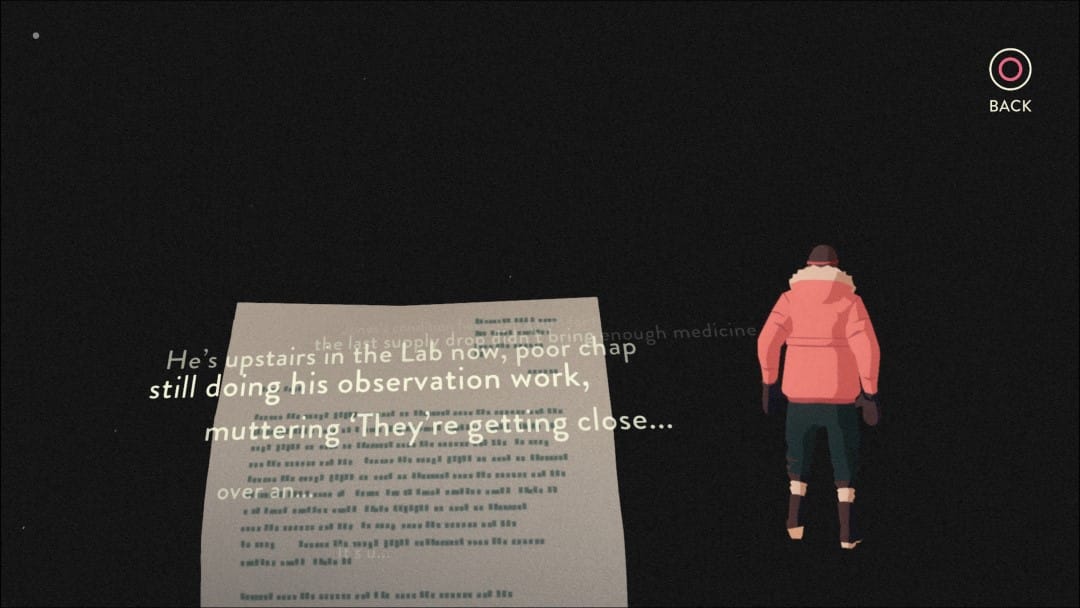
In the context of its original release, South of the Circle was an impressive accomplishment on Apple Arcade. It was an experience built in the Unity engine for smart devices that incorporated motion capture performances and seamless scene transitions to center its story. All while maintaining a simple but understandable control scheme for touch-screen users. There's a reason why the original release received so many award nominations.
Some of that technical context is lost with the transition to PC and Consoles. While the stylized visuals work really well on a large monitor, it also highlights texture pop as well as some underwhelming screen filters during certain scenes. Mapping touch screen controls to a gamepad also causes some minor annoyances. Reading something isn't just a static block of text but something you must “scroll” through. Moving forward changes back and forth between happening automatically or controlled with an analog stick. These are annoyances but they can add up throughout the game's three to four-hour runtime.
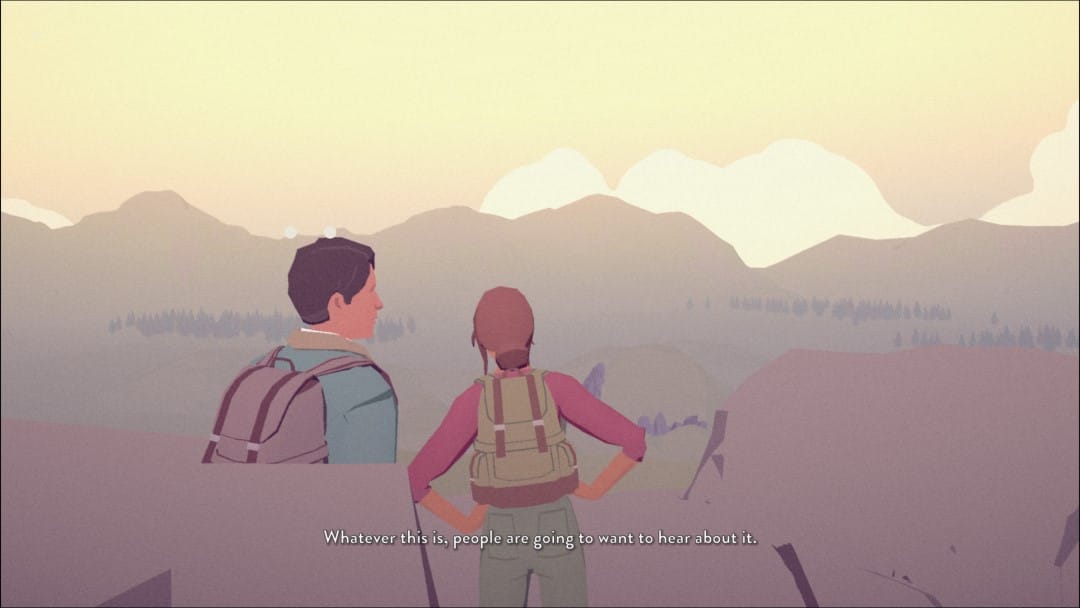
South of the Circle Review | Final Thoughts
If you aren't fond of story-driven experiences or walking simulators, then South of the Circle won't change your mind. However, if you are interested in such a narrative and you do not have access to Apple Arcade, this is an equally valid way to experience this introspective story of survival. There is some jank when it comes to the controls and a few hitches in the presentation, but the art direction and performances are worth it.
TechRaptor reviewed South of the Circle on PlayStation 5 with a copy provided by the publisher. The game is also available on PlayStation 4, Xbox One, Xbox Series X|S, Nintendo Switch, PC, and iOS.
Review Summary
Pros
- Strong Character Performances and Writing
- Beautiful, Expressive Art Direction and Cinematic Storytelling
Cons
- Minor Technical and Control Hiccups
- Very Little Replay Value
Have a tip, or want to point out something we missed? Leave a Comment or e-mail us at tips@techraptor.net
